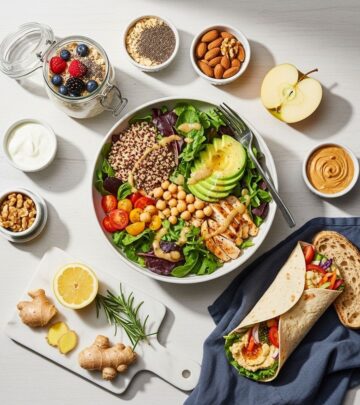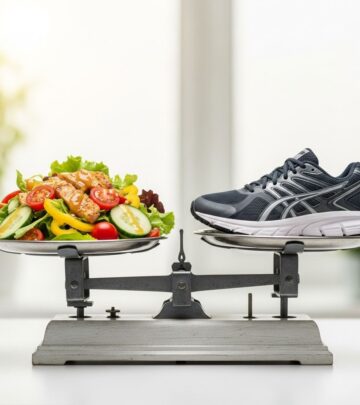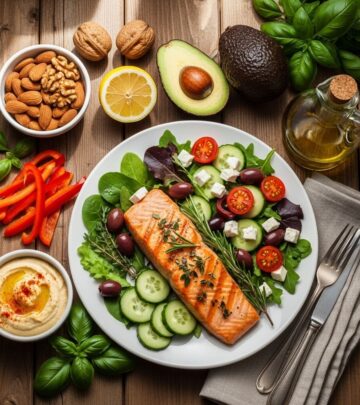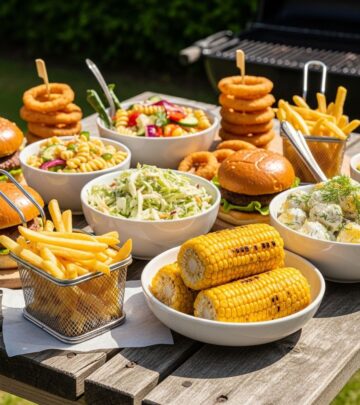Is It Safe to Eat Moldy Cheese? A Comprehensive Guide
Learn the differences between safe and unsafe molds on cheese, the health risks involved, and how to handle moldy cheese safely at home.
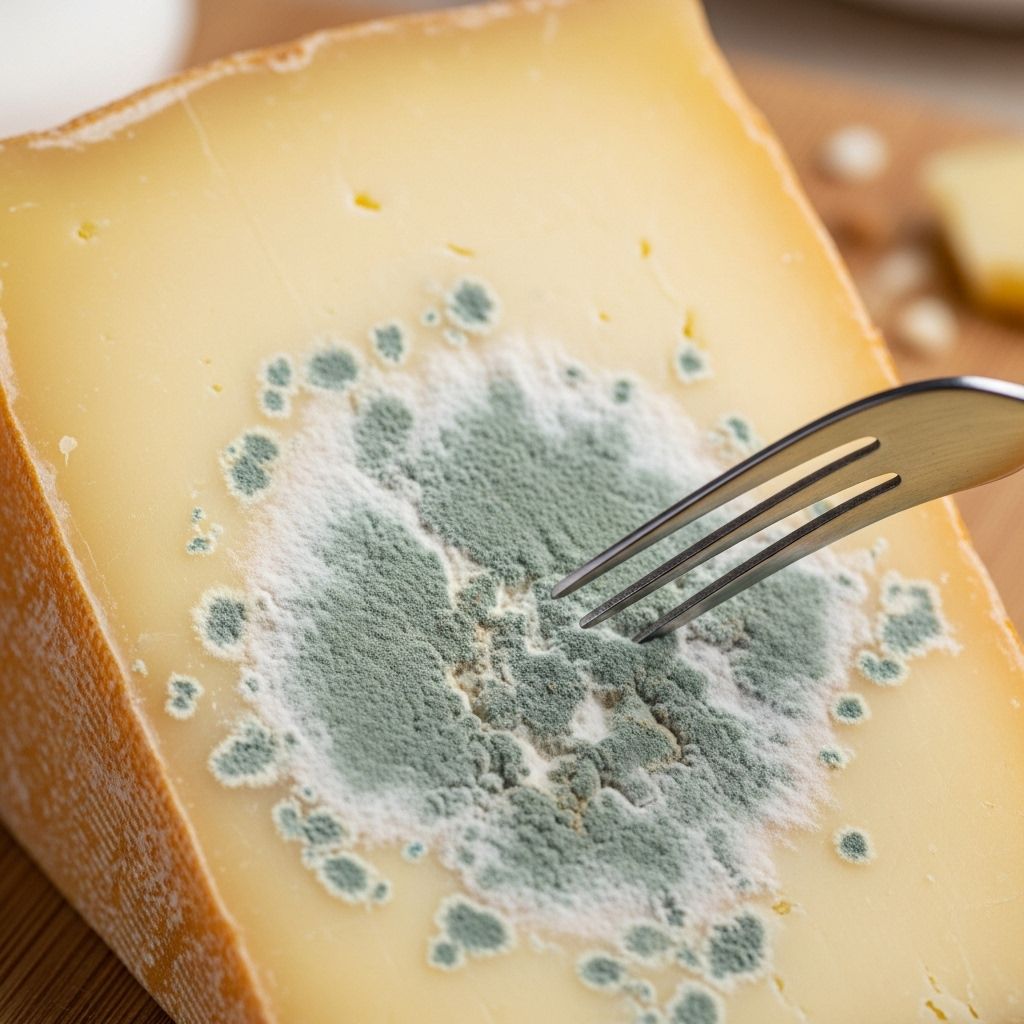
Is It Safe to Eat Moldy Cheese? Understanding the Facts
Moldy cheese can be confusing—while some cheeses are deliberately made with mold, unintentional mold can signal spoilage and potential health risks. This guide explores the distinctions between edible and unsafe mold, how to recognize dangerous growths, when to discard cheese, and best practices for cheese storage and handling.
Table of Contents
- Cheese and Mold: What You Need to Know
- Why Does Mold Grow on Cheese?
- Which Cheeses Are Made with Mold (and Are Safe)?
- Recognizing Dangerous Mold Growth
- Can You Eat Moldy Cheese?
- Health Risks of Eating Moldy Cheese
- What to Do with Moldy Cheese: Keep or Discard?
- Proper Cheese Storage and Mold Prevention
- Frequently Asked Questions (FAQs)
Cheese and Mold: What You Need to Know
Mold is a type of fungus, and while many types are best avoided, certain molds are intentionally introduced during cheese production to create distinct textures and flavors. However, not all mold is created equal. The way mold interacts with cheese depends on the type of cheese and how it is stored.
Why Does Mold Grow on Cheese?
Cheese is a rich food source, which makes it a natural target for mold spores. Mold thrives in moist, protein- and fat-rich environments—just like cheese. Factors influencing mold growth include:
- Moisture level in the cheese and environment
- Temperature (warmer temperatures speed up mold growth)
- Air exposure (unwrapped or poorly wrapped cheese is susceptible)
- Type of cheese—soft, fresh cheeses are more vulnerable than hard ones
Which Cheeses Are Made with Mold (and Are Safe)?
Some cheeses are deliberately inoculated with safe, edible molds during production, leading to unique textures, flavors, and appearances. These include:
- Blue-veined cheeses (such as Roquefort, Gorgonzola, and Stilton): Have blue or green veins throughout, created by Penicillium roqueforti.
- Soft-ripened cheeses (such as Brie and Camembert): Feature a white, bloomy rind produced by Penicillium candidum or similar molds.
These cheeses are safe to eat for most healthy individuals—mold is central to their character and quality. However, unsanctioned fuzzy, off-color, or atypical molds on these cheeses is undesirable and may be unsafe.
Recognizing Dangerous Mold Growth
Not every mold is safe—even on blue or soft-ripened cheeses. Harmful molds tend to look like fuzzy or powdery patches that may be white, blue, green, black, or even pink. Indicators that mold may be unsafe include:
- Mold growth that is inconsistent with the cheese’s natural appearance
- Unusual colors or textures (e.g., fuzzy colonies)
- Uncharacteristic odors (beyond the cheese’s typical aroma)
If you are unsure whether mold growth is safe—especially on cheeses not meant to be moldy—err on the side of caution and discard the cheese.
Can You Eat Moldy Cheese?
The answer depends on the type of cheese and the kind of mold present
| Cheese Type | Deliberate Mold Included? | If Accidental Mold Appears | Safe to Eat? |
|---|---|---|---|
| Hard cheeses (Parmesan, Cheddar, Swiss, Colby) | No | Trim at least 1 inch (2.5 cm) around & below moldy spot; eat the rest | Generally Yes* |
| Semisoft cheeses (Havarti, Monterey Jack, Provolone) | No | Follow hard cheese guidelines | Yes, with careful trimming* |
| Soft cheeses (Cream cheese, Ricotta, Cottage Cheese, Queso Fresco) | No | Discard entirely—mold can spread throughout | No |
| Shredded/Sliced/Cumbled cheese (all types) | No | Discard entirely—mold quickly contaminates all surfaces | No |
| Soft-ripened cheeses (Brie, Camembert) | Yes (surface mold is intentional) | If any mold that is not part of production appears—discard | Eat only the intended mold |
| Blue cheeses (Gorgonzola, Roquefort, Stilton) | Yes (internal blue/green veins are safe) | If unexpected surface mold appears, trim away or discard | Eat only the intended mold |
*If immunocompromised (pregnant, elderly, children, or chronic illness), avoid moldy cheeses except where clearly labeled as safe and pasteurized.
Health Risks of Eating Moldy Cheese
Molds can carry harmful bacteria such as Escherichia coli (E. coli), Listeria, Salmonella, and Brucella, all of which can lead to serious foodborne illness. In addition, dangerous molds can produce mycotoxins—toxic compounds that may cause acute symptoms (vomiting, stomach pain, diarrhea) or, with long-term exposure, complications such as immune deficiency or even cancer. For example, aflatoxin (a potent carcinogen) has been associated with liver cancer in severe cases.
- Food poisoning: Nausea, vomiting, stomach cramps, diarrhea.
- Severe risk groups: Young children, pregnant women, older adults, and immunocompromised individuals are more susceptible and should avoid any suspect or moldy cheese not clearly meant for consumption.
- Mycotoxins: These toxins cannot be removed once present, and can be especially dangerous.
To minimize your risk, always inspect cheese for spoilage before eating and follow food safety guidelines.
What to Do with Moldy Cheese: Keep or Discard?
The approach varies based on cheese type:
- Hard and Semisoft Cheeses: If you find mold, cut off at least one inch (2.5 centimeters) around and below the spot, ensuring your knife does not contact the mold directly (which could spread spores).
- Soft, Fresh, or Shredded/Sliced/Cumbled Cheeses: Discard immediately—the structure allows mold and bacteria to penetrate, even if the contamination appears localized.
- Soft-Ripened/Blue Cheeses: Only eat mold that’s part of production. If unexpected or fuzzy mold, discard the cheese or cut it out if it is a hard variety.
If in any doubt, especially with cheeses made from unpasteurized milk, or for people in high-risk groups, it’s safest to err on the side of caution and throw the cheese out.
Proper Cheese Storage and Mold Prevention
Good storage methods dramatically reduce mold risk. Follow these steps to keep cheese at its best:
- Refrigerate cheese at 34–38°F (1–3°C).
- Wrap tightly. Use plastic wrap, wax paper, or special cheese paper to prevent moisture and air exposure. For soft cheeses, airtight packaging is ideal.
- Buy smaller amounts. Purchase only what you will use within a week or two.
- Check regularly for any discolored spots, fuzzy patches, or off odors.
- Store away from strong-smelling foods to avoid cross-contamination of flavors and potential mold growth.
- Clean storage containers and knives thoroughly after each use to prevent the spread of mold spores.
When buying cheese, select pieces with smooth textures, no cracks, and no signs of yellowing or unusual hardening. For blue or soft-ripened cheeses, only accept those with expected rinds or veins.
Frequently Asked Questions (FAQs)
Q: Can I scrape off the mold and eat the rest of the cheese?
A: Only for hard or some semisoft cheeses; cut at least one inch around and below the moldy spot, using a clean knife that does not contact the mold directly. For soft, sliced, crumbled, or shredded cheeses, discard the entire portion if any mold is present.
Q: Is it safe to eat the mold in blue cheese?
A: Yes—the veins in blue cheeses are created with edible, specially cultured mold. However, any unexpected surface mold should be trimmed away or, if in doubt, the cheese should be discarded.
Q: Does cooking or freezing kill harmful mold in cheese?
A: Freezing may inactivate but does not destroy some mold toxins, and cooking does not reliably eliminate all harmful compounds or bacteria associated with mold. When in doubt, it’s safest to discard cheese with questionable mold growth.
Q: How can I tell if the mold is safe or dangerous?
A: Only the mold intentionally used in cheese production—such as the white rind on Brie or the veins in blue cheese—is safe to eat. Fuzzy, discolored, or unexpected mold patches indicate spoilage and potential danger.
Q: What populations should avoid all moldy cheeses?
A: Infants, young children, pregnant women, older adults, and anyone with a compromised immune system should avoid all moldy cheeses except those clearly labeled, made with pasteurized milk, and intended for safe consumption.
Key Takeaways
- Not all mold on cheese is dangerous—some cheese is intentionally made with safe, edible mold.
- Hard and semisoft cheeses may be salvaged by trimming away moldy spots; soft and processed cheeses should be thrown out entirely if moldy.
- Moldy cheese can contain dangerous toxins and bacteria; consuming it may cause food poisoning or worse.
- Store cheese properly—tightly wrapped and refrigerated—to prevent mold growth.
- When in doubt, throw cheese out, especially if you’re among high-risk groups or suspect unsafe mold.
Read full bio of medha deb


